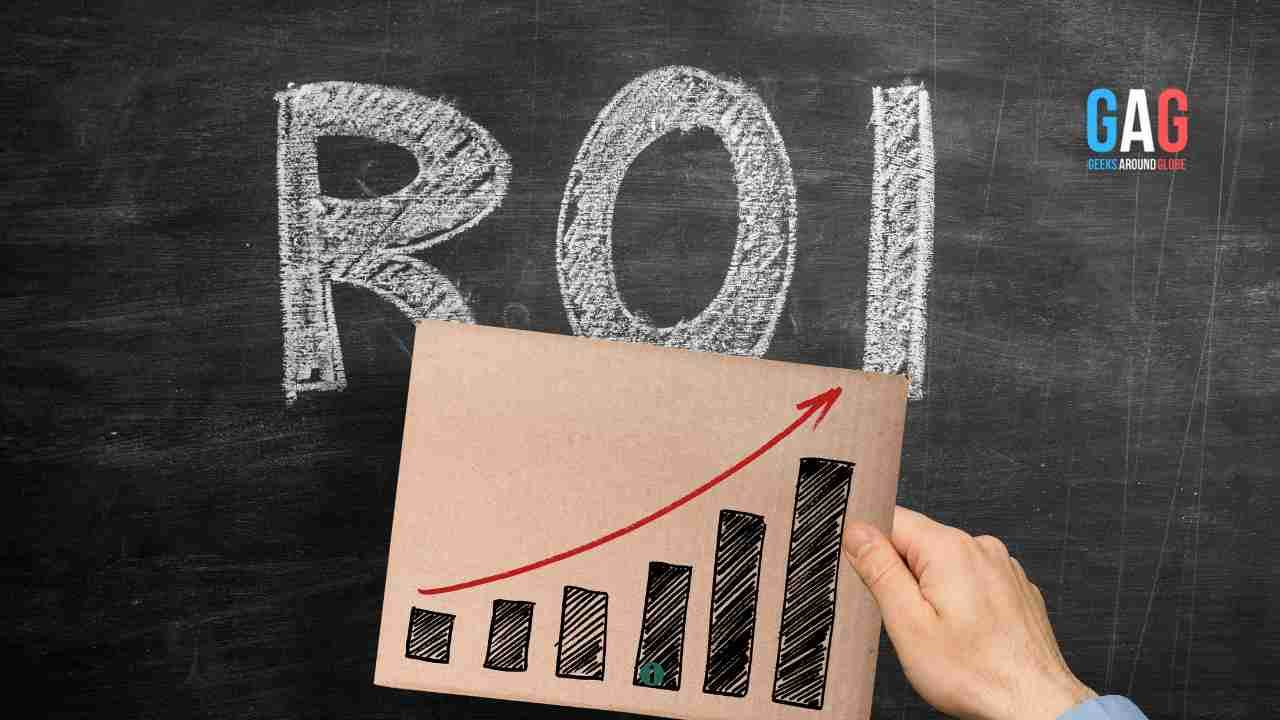In today’s digital age, paid advertising has become a crucial component of marketing strategies for businesses of all sizes. With the right approach, paid advertising can significantly boost your return on investment (ROI) and help you reach your target audience effectively. This article will delve into the power of paid advertising and provide insights on how to maximize your ROI. So, let’s dive in and discover the secrets of successful paid advertising campaigns!
Are you passionate about digital marketing and want to take your skills to the next level? Consider pursuing a post-graduation in digital marketing. A program such as this provides in-depth knowledge and hands-on experience in various aspects of digital marketing, including paid advertising, search engine optimization (SEO), social media marketing, content marketing, and more.
The Power of Paid Advertising: How It Works
Paid advertising is a marketing technique where businesses pay to display their ads on various platforms such as search engines, social media platforms, websites, or mobile apps. It offers an opportunity to target specific demographics, reach a wider audience, and drive relevant traffic to your website. By investing in paid advertising, businesses can increase brand visibility, generate leads, and ultimately boost their revenue.
Understanding ROI in Paid Advertising
ROI, or return on investment, is a metric used to measure the profitability of an investment. In the context of paid advertising, ROI indicates how much revenue you generate compared to the amount spent on advertising. Maximizing your ROI in paid advertising involves optimizing your campaigns to achieve the highest possible return on your investment. By implementing effective strategies, you can ensure that every dollar spent on advertising brings in significant returns.
If you’re looking to take your digital marketing career to new heights, consider exploring opportunities like pursuing an MBA in digital marketing in Mumbai. This blog on MBA in digital marketing in Mumbai provides insights into the benefits of acquiring advanced knowledge and skills through an MBA program tailored to digital marketing along with a list of top institutes in Mumbai.
The Benefits of Paid Advertising
Paid advertising offers several benefits that can help businesses thrive in a competitive market. Let’s explore some of the advantages:
Increased Brand Awareness:
Paid advertising allows you to reach a wider audience and increase your brand’s visibility. With strategic targeting, you can ensure that your ads are displayed to users who are most likely to be interested in your products or services.
Precise Targeting:
One of the key advantages of paid advertising is the ability to target specific demographics, interests, and behaviours. This precise targeting ensures that your ads are shown to the right people at the right time, increasing the chances of conversion.
To succeed in the ever-evolving field of digital marketing, it’s crucial to equip yourself with the necessary skills. These skills enable you to navigate the digital landscape with confidence, adapt to emerging trends, and drive impactful marketing campaigns. Whether it’s search engine optimization (SEO), social media marketing, content creation, or data analytics, acquiring digital marketing skills is essential for staying ahead in the competitive market.
If you’re eager to enhance your skills and stay up to date with the latest industry practices, check out this blog post on digital marketing skills. It provides valuable insights into the core skills every digital marketer should possess and offers practical tips for acquiring and refining these skills.
Immediate Results:
Unlike organic marketing efforts, paid advertising delivers immediate results. Once your campaign is set up and running, you can start seeing traffic and conversions right away, providing a quick boost to your business.
Cost Control:
Paid advertising platforms offer flexible budgeting options, allowing you to set daily or monthly spending limits. This ensures that you have full control over your advertising costs and can adjust your budget based on the performance of your campaigns.
Measurable Results:
With paid advertising, you can track and measure the performance of your campaigns using various metrics such as impressions, clicks, conversions, and ROI. This data-driven approach enables you to make informed decisions and optimize your advertising strategies for better results.
Maximizing Your ROI in Paid Advertising
Now that we understand the power and benefits of paid advertising, let’s explore some actionable strategies to maximize your ROI:
1. Set Clear and Measurable Goals
Before launching your paid advertising campaigns, it’s crucial to define clear and measurable goals. Are you looking to increase website traffic, generate leads, boost sales, or improve brand awareness? By setting specific goals, you can align your strategies and track the success of your campaigns more effectively.
2. Conduct Thorough Keyword Research
Keywords play a vital role in paid advertising. Conduct thorough keyword research to identify relevant and high-performing keywords for your industry. Utilize keyword research tools and analyze competitor campaigns to discover valuable keyword opportunities. By targeting the right keywords, you can attract qualified traffic and maximize your ROI.
3. Create Compelling Ad Copy
Crafting compelling ad copy is essential to capture the attention of your target audience. Write concise and persuasive ad headlines and descriptions that highlight the unique selling points of your products or services. Use strong calls-to-action (CTAs) to encourage users to take the desired action, such as making a purchase or filling out a form.
4. Optimize Landing Pages
A well-optimized landing page is crucial for maximizing conversions. Ensure that your landing pages align with the messaging of your ads and provide a seamless user experience. Optimize your landing pages for speed, mobile responsiveness, and clear CTAs to drive higher conversion rates.
5. Implement Conversion Tracking
To measure the success of your paid advertising campaigns, it’s vital to implement conversion tracking. Set up conversion tracking pixels or codes on your website to track specific actions such as form submissions, purchases, or sign-ups. This data will provide valuable insights into the effectiveness of your campaigns and help you identify areas for improvement.
6. Continuously Monitor and Optimize
Paid advertising requires ongoing monitoring and optimization to ensure optimal performance. Regularly review the performance of your campaigns, analyze key metrics, and make data-driven adjustments. Test different ad variations, landing page designs, and targeting options to identify the most effective combinations.
Frequently Asked Questions (FAQs)
Q: How much should I allocate for my paid advertising budget?
A: The budget allocation for paid advertising depends on various factors, including your industry, competition, and business goals. It’s essential to conduct thorough research and determine a budget that allows for meaningful results. Start with a conservative budget and gradually increase it as you gain more insights and see positive returns.
Q: Which platforms should I consider for paid advertising?
A: The choice of platforms depends on your target audience and business objectives. Popular platforms for paid advertising include Google Ads, Facebook Ads, Instagram Ads, LinkedIn Ads, and Twitter Ads. Research your target audience’s demographics and preferences to identify the platforms that align with your goals.
Q: How long does it take to see results from paid advertising?
A: The time it takes to see results from paid advertising can vary based on factors such as industry competitiveness, campaign optimization, and targeting effectiveness. While some campaigns may yield immediate results, others may take several weeks or months to gain traction. It’s essential to be patient and continuously monitor and optimize your campaigns for better performance.
Q: Should I focus solely on paid advertising or combine it with other marketing strategies?
A: It’s advisable to combine paid advertising with other marketing strategies to achieve a comprehensive approach. Paid advertising can drive immediate results, but organic marketing efforts such as search engine optimization (SEO), content marketing, and social media engagement provide long-term sustainability and brand building.
Q: How can I measure the success of my paid advertising campaigns?
A: The success of your paid advertising campaigns can be measured through key performance indicators (KPIs) such as click-through rates (CTR), conversion rates, cost per acquisition (CPA), and ROI. Track these metrics regularly and compare them against your predefined goals to gauge the effectiveness of your campaigns.
Q: What are some common mistakes to avoid in paid advertising?
A: Some common mistakes to avoid in paid advertising include poor targeting, irrelevant ad copy, lack of conversion optimization, insufficient budget allocation, and failure to monitor and optimize campaigns. It’s crucial to stay updated with industry trends and best practices to maximize the impact of your paid advertising efforts.
Conclusion
Paid advertising presents a powerful opportunity for businesses to enhance their online presence, reach their target audience, and maximize their ROI. By following the strategies mentioned in this article and continuously monitoring and optimizing your campaigns, you can unlock the full potential of paid advertising and achieve exceptional results. Embrace the power of paid advertising and propel your business to new heights of success.







